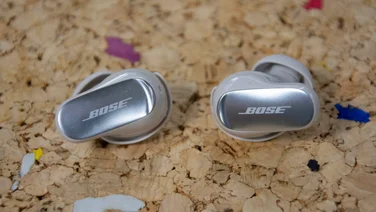To help us provide you with free impartial advice, we may earn a commission if you buy through links on our site. Learn more

The Siberia range has to be one of the longest-lasting gaming headsets of all time, and is now on its third iteration. The V3 Prism is the culmination of almost ten years of gamer feedback, which has given Steelseries plenty to work with when it comes to refining the design.
DESIGN & BUILD QUALITY
The result is familiar to anyone that used the original or V2 models, with a suspension system that expands to fit your head and spread the weight of the headset evenly across it. The leatherette band is nowhere near as fluffy as the V2, which should mean it’s easier to keep clean.
It’s a lot more comfortable than some of the fixed headband headsets we’ve used in the past, and at less than 300g it barely puts any strain on your head, meaning you can get through a marathon game session without getting uncomfortable.
Leatherette ear cups completely surround your ears and do a reasonable job at blocking out exterior noise. Steelseries has filled each cup with memory foam, which help create a tighter seal around your ears. They don’t completely isolate you from the outside world, but when you’re in the middle of a hectic game you’re unlikely to hear anything around you. There is a small amount of sound leakage from the 50mm drivers, but only at high volumes – at reasonable levels you shouldn’t annoy anyone nearby.

The rest of the headset is made from rigid plastic, which helps keep weight down but still feels sturdy. We weren’t too keen on the lighter grey finish, however; arguably it makes the headset look a little cheap, and we would have preferred an all-black colour scheme.
We also miss any kind of in-line volume control. You do at least get a mute toggle for the integrated boom mic, but it’s a little tricky to find at first. After a few hours of gaming, we’d learned its position and could toggle the microphone on and off much quicker.
The microphone itself slides out of the left ear cup when you need it but retracts for when you aren’t using voice comms. It was perfectly clear during our lunchtime gaming sessions, although it did pick up a fair amount of background noise and has a limited amount of noise cancellation.

V3 PRISM
The Siberia V3 is available as a cheaper, standard model, or as the Prism variant reviewed here. The two headsets are identical in terms of sound and build quality, but the Prism gains illuminated ear cups that can be controlled using the Steelseries software suite. You can customise the colour, set the LEDs to alternate between several colours or phase the lights on and off in a pattern. It’s a nice effect, but if you aren’t fussed about LEDs the regular V3 costs considerably less.
The Steelseries Engine control panel also lets you tweak the microphone volume, enable microphone optimisation and adjust the audio signature – either with a range of presets or a five channel EQ. You can also save your custom presets and automatically enable them when launching specific applications, in case you want different sound characteristics for different games.
Finally, Steelseries Engine connects with any other Steelseries peripherals connected to your PC, letting you tweak everything from one location – this is much better than having separate programs for each peripheral, which is still the case with other manufacturers.

SOUND QUALITY
The V3 Prism uses an integrated USB sound card rather than 3.5mm audio jacks, meaning you won’t be able to use it with a dedicated sound card. You can, however, plug it into a PS4 and use it as a headset with voice for gaming. It worked perfectly when we tried it in a Destiny strike, so if you switch between PC and console you won’t need to buy two headsets.
The 50mm drivers have a 10 – 28000Hz frequency range and produce dynamic, warm audio. The upper mid-range was precise and punchy, with a surprisingly wide soundstage. Breaking glass and vocals were impressively clear, without becoming too harsh.
That being said, the sound signature is undeniably bass-heavy. This is the case with almost all gaming headsets, giving huge presence to gunfire, explosions and other low-end audio, but it can be an unwelcome intrusion if you want to listen to music. Thankfully you can tone this down using the software equaliser, and as a result we could happily use it throughout the day with multimedia as well as games.
Unfortunately there’s no virtual surround sound here, so you’re limited to stereo audio in games. This may put off first person shooter fans, as we found it slightly harder to detect where our enemies were in Counter Strike than with other headsets.
CONCLUSION
The Siberia V3 has some welcome upgrades over the V2, and the Prism edition is sure to grab people’s attention while you’re gaming, but we can’t help but feel it’s lacking a few features we take for granted on other gaming headsets like an in-line volume control. Audio quality is superb, particularly for games, and works well with music and video with a little tweaking. If you don’t need the light show, Qpad’s QH-85 costs around £15 less and has a more balanced sound, but if you like to make a statement with your gaming gear this is guaranteed to do it.






